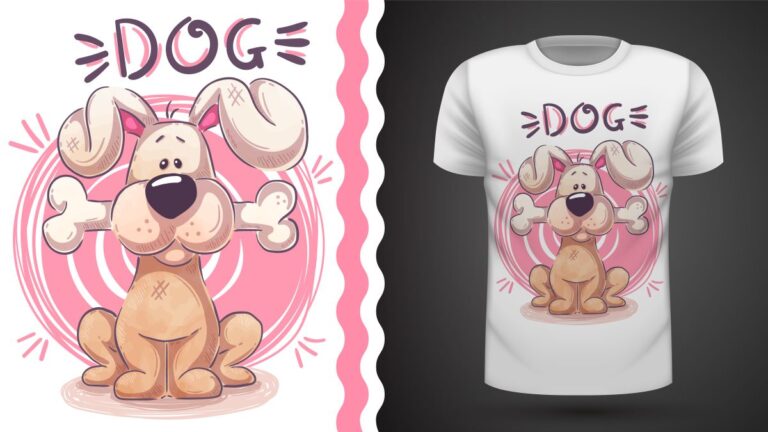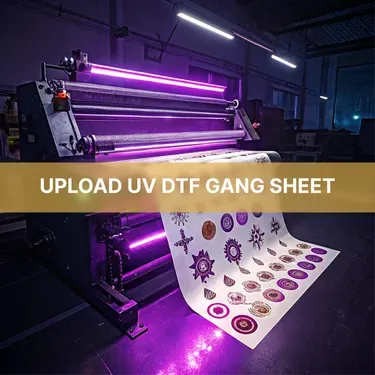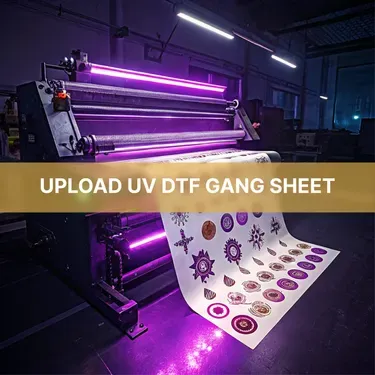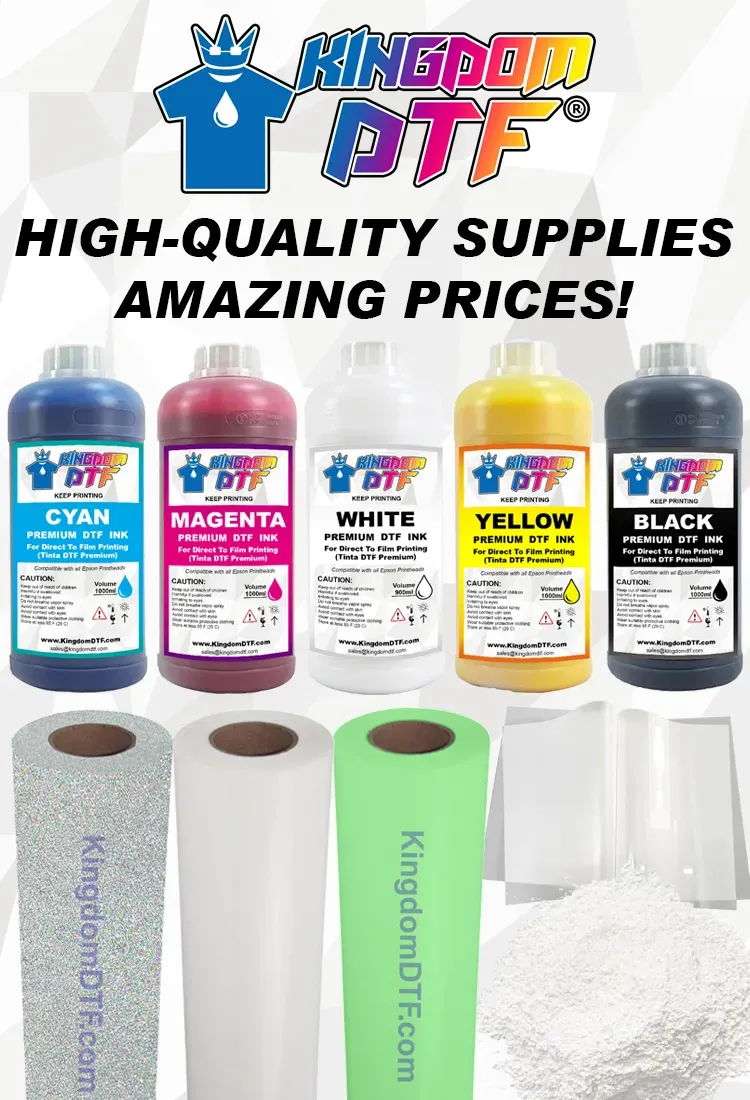DTF Supplies: Choosing the Right Materials for Success
DTF supplies are essential for businesses that want to excel in the exciting world of Direct-to-Film (DTF) printing. This innovative printing method allows for vibrant designs to be transferred onto a wide range of fabrics with remarkable ease and precision. By choosing the right DTF film, inks, and adhesives, companies can significantly enhance their production quality and efficiency. As DTF printing continues to gain momentum in the textile industry, understanding how to select the best materials will empower businesses to deliver standout products to their clients. In this article, we’ll explore effective strategies for selecting the top DTF supplies tailored to your specific business needs.
When it comes to sourcing essential materials for film printing, the term “transfer supplies” often comes into play. This includes everything necessary for the Direct-to-Film printing process, from specialized films to high-quality inks and strong adhesives. By utilizing the right transfer materials, businesses can ensure that their designs not only pop with color but also maintain integrity over time. Additionally, understanding the nuances of various film types, adhesive options, and ink formulations can dramatically influence the performance and durability of the final prints. As the demand for customized textile printing grows, knowing the alternatives and enhancements available can streamline your workflow and elevate your outcomes.
Understanding DTF Printing Essentials
DTF printing, or Direct-to-Film printing, represents a breakthrough in textile printing technology. Unlike traditional methods that directly engage fabric, DTF printing uses a specialized film that acts as a transfer medium. During the process, vibrant designs are printed onto the DTF film with high-quality DTF inks, ensuring sharp edges and vivid colors that stand out on any fabric. Once printed, the film is coated with adhesive powder, activated by heat, and pressed onto the chosen substrate. This method not only allows for more intricate designs but also enhances the durability of prints, making it an excellent choice for businesses looking to offer high-quality customized garments.
The popularity of DTF printing is largely due to its versatility; it can be used on various fabrics, from cotton to polyester blends. This flexibility appeals to a broad clientele, enabling businesses to diversify their offerings and cater to different market segments. Understanding these essential processes of DTF printing can significantly enhance your throughput and creativity when developing new products. Thus, mastering DTF printing basics is pivotal for the success of your business.
The Importance of Quality in DTF Supplies
The quality of DTF supplies cannot be overstated, as it directly influences the final product’s outcome. When looking to source your DTF film, it’s crucial to invest in reputable brands renowned for their consistent performance. High-quality DTF films like those offered by **Avery** or **GSG Films** ensure optimal ink adhesion and deliver prints that withstand washing and wear without fading. A failure to utilize quality materials can lead to poor print results and dissatisfied customers, affecting your bottom line.
Additionally, the type of DTF adhesive you select plays a role in determining your production efficiency. Hot peel adhesives tend to dry faster, enabling quicker turnarounds, while cold peel adhesives offer precision for detailed designs. As you consider your production workflow, choosing high-quality adhesives aligned with your design needs ensures not only a better print finish but also an effective and streamlined operational process.
Selecting the Right DTF Inks for Your Prints
Choosing the right DTF inks is critical for achieving vibrant and long-lasting prints. Water-based inks are commonly favored in DTF printing due to their non-toxic nature, vivid pigmentation, and flexibility. Brands like **DTF Ink USA** specialize in producing inks that cater to businesses seeking high opacity and reliable adhesion on various fabrics. Investing in quality inks ensures that your designs not only look exceptional but also maintain their appearance over time, making them ideal for apparel that will endure frequent washing.
Another significant consideration is the compatibility of the inks with your specific printer model. It’s vital to confirm that the inks you choose are designed to work seamlessly with your printing equipment. This compatibility not only maximizes efficiency during the printing process but also minimizes the risk of operational issues, allowing for a smoother production flow. Understanding the nuances of ink selection in DTF printing can significantly impact the quality and longevity of your final products.
Ensuring Equipment Compatibility for DTF Success
Compatibility between your DTF supplies and print equipment is fundamental to achieving optimal results. Before making any purchases, thoroughly review your printer’s specifications to guarantee it can handle DTF film, powders, and adhesives. The right alignment will streamline your production process, minimize the need for adjustments, and enhance the efficiency of your operations. Thus, confirming your chosen supplies will integrate smoothly with your hardware is a vital step to ensure success in your DTF printing endeavors.
Moreover, investing in compatible equipment also extends to other machinery and accessories within your workflow, such as heat presses. Ensuring that every component of your output process is designed to work together will not only improve the quality of your prints but also reduce downtime associated with equipment malfunctions or compatibility issues. By prioritizing this compatibility, you set your business up for sustained growth and a reputation for reliability in the competitive DTF market.
Balancing Cost and Quality in DTF Supplies
In the realm of DTF printing, finding the balance between cost and quality is key to optimizing your resources. While it may be tempting to opt for the cheapest options available, this approach often leads to compromises in print quality and increased operational waste. High-quality DTF supplies may require more upfront investment, but they typically yield better results, lower rejection rates, and a longer lifespan for printed designs—ultimately leading to a more profitable outcome.
Conducting careful research and considering customer feedback can help you identify suppliers that offer premium materials at reasonable prices. A wise strategy involves evaluating the long-term benefits associated with investing in reputable brands versus the short-term savings from cheaper alternatives. Your commitment to quality will not only enhance customer satisfaction but also solidify your brand’s reputation, making it easier to justify an investment in higher quality DTF supplies.
Finding Reliable DTF Suppliers for Consistent Quality
The supplier you choose significantly impacts the quality and consistency of your DTF prints. Opting for reliable suppliers who specialize in high-quality DTF products ensures that you receive materials that meet your stringent production standards. Look for suppliers that provide excellent customer support, comprehensive product guarantees, and educational resources like tutorials and technical guides. Such support can be invaluable for troubleshooting any issues that may arise during your printing process.
Engaging with industry communities, whether through online forums, social media groups, or local print shops, allows you to gather insights on the most reputable suppliers in your area. By tapping into collective knowledge, you can make informed decisions that align with your business’s needs. Ultimately, fostering good relationships with reliable suppliers can enhance your operational stability and ensure the continuous flow of quality DTF materials.
Frequently Asked Questions
What are the essential DTF supplies needed for successful DTF printing?
To successfully execute DTF printing, you’ll need quality DTF supplies including DTF film, DTF inks, and DTF adhesive. Ensure that your materials are compatible with your printer. Popular DTF films from reputable brands guarantee good ink adhesion and durability.
How do I choose the right DTF film for my printing needs?
When selecting DTF film, consider brands known for their quality, such as Avery or GSG Films. Prioritize films that provide excellent ink adhesion and can endure repeated washing without losing color vibrancy.
What is the difference between hot peel and cold peel DTF adhesives?
Hot peel DTF adhesives dry quickly, allowing for faster production times, while cold peel adhesives are ideal for detailed designs as they permit more careful handling and precision. The choice depends on your specific production workflow and design complexity.
Can I use any ink for DTF printing, or is it specialized?
DTF printing typically requires specialized water-based DTF inks that deliver rich colors and flexibility. It’s crucial to select inks that are compatible with your printer to achieve the best printing results.
How can I ensure that my DTF supplies are compatible with my printer?
To confirm compatibility, review your printer’s specifications and consult product descriptions of the DTF supplies you intend to purchase. Ensure that both the DTF film and adhesives are designed to work with your specific type of printer.
What should I consider when selecting a supplier for my DTF supplies?
Choose suppliers who offer reliable customer service, product warranties, and positive reviews within the DTF printing community. Feedback from fellow print businesses can guide you to trustworthy sources for your DTF supplies.
| Key Point | Details |
|---|---|
| Understanding DTF Printing Basics | DTF printing involves printing designs onto film, then transferring to fabric using heat and pressure. |
| Quality of Film and Adhesives | Choose reputable brands for DTF film and understand the difference between hot peel and cold peel adhesives. |
| Choosing Inks | Use water-based inks known for vivid colors and flexibility, ensuring compatibility with your printer. |
| Equipment Compatibility | Verify that your printer can handle the selected DTF supplies to avoid production issues. |
| Cost Considerations | Investing in quality supplies can reduce waste and improve overall print quality. |
| Supplier Reliability | Choose suppliers with good customer service and product guarantees. |
| Testing Samples | Request samples to assess compatibility and quality before making a commitment. |
Summary
DTF supplies are crucial for businesses looking to excel in the Direct-to-Film printing industry. Understanding the essentials of selecting high-quality materials, ensuring compatibility with your equipment, and finding reliable suppliers can significantly impact your printing capabilities. By prioritizing these elements and continually testing and evolving your supply choices, your business can thrive, creating vibrant designs that stand out in the competitive market. Investing in the right DTF supplies not only enhances your production quality but also boosts your overall business success.







